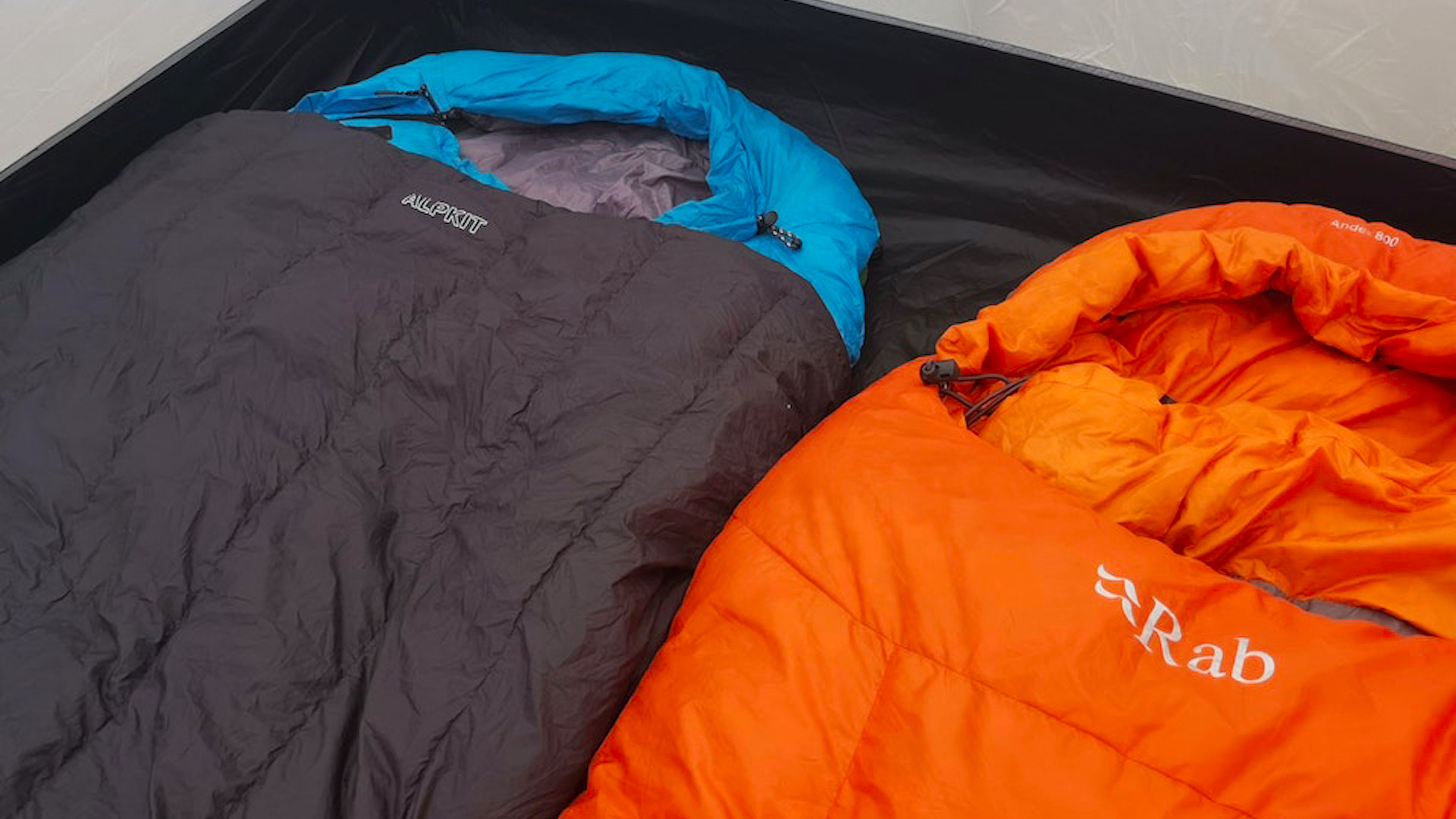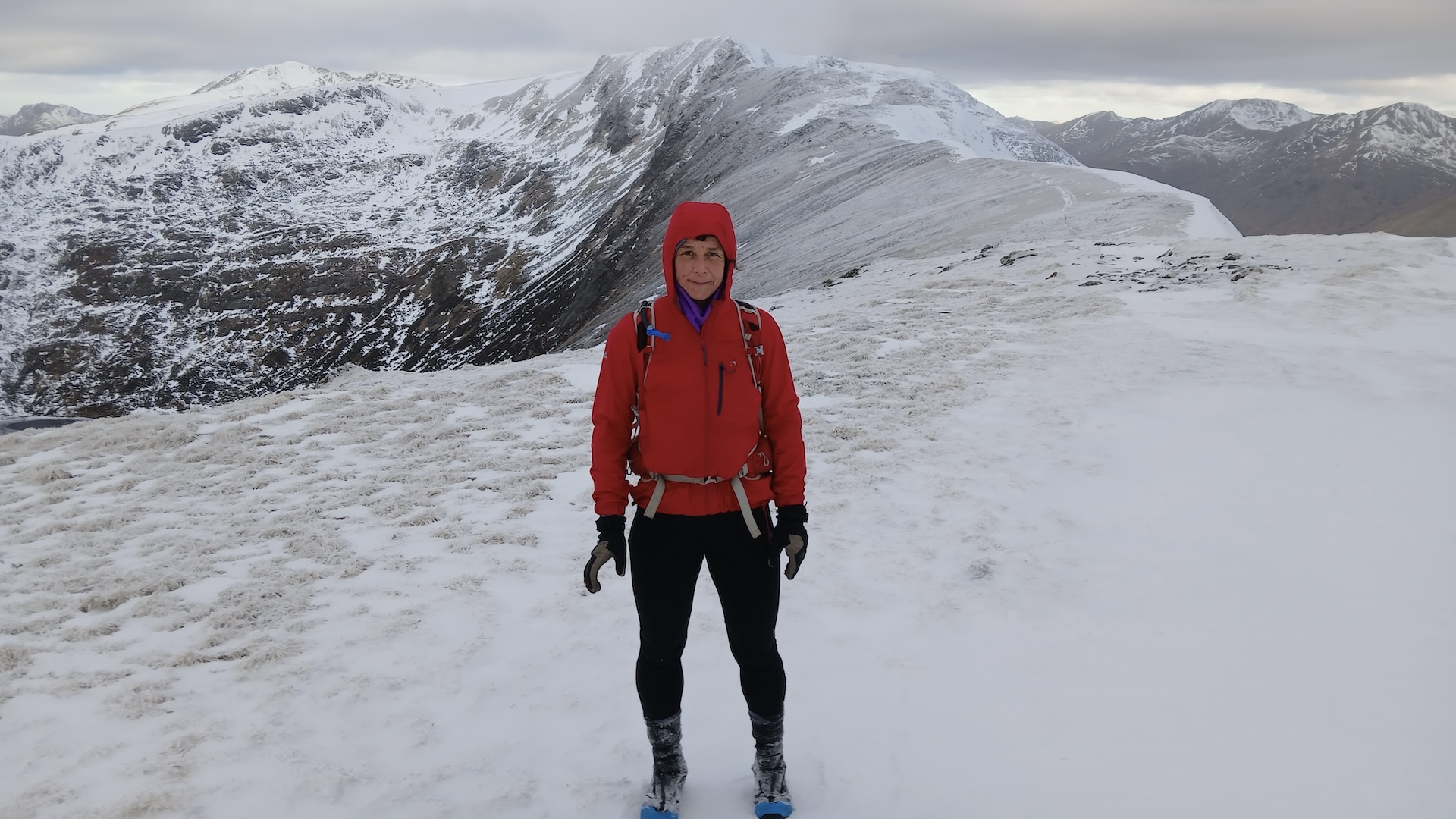Advnture Verdict
A premium 800FP down bag that’s warm enough for deep midwinter, and even for expedition use thanks to a real world sleep limit of -23°C (-10°F). It’s very competitive in terms of weight and pack size too for a proper four-season bag. But what really sets the Andes 800 apart from the rest is its superior resistance to damp and moisture – the traditional Achilles heel of down insulation. Rab have counteracted this by using hydrophobic fill and a highly water-resistant Gore-Tex shell fabric.
Pros
- +
Extremely warm
- +
Moisture-resistant down and fabrics
- +
Great hood
Cons
- -
Costs over $700/£600
- -
Tapered cut isn’t the roomiest
- -
No compression stuff sack
You can trust Advnture
Rab Andes Infinium 800: first impressions
The premium Rab Andes Infinium 800 down bag lies at the top end of the four-season sleeping bag category, verging into full-on expedition use. Rab say it’s been designed for use at high altitudes and on winter expeditions, and with a sleep limit of -23°C (-10°F), it’s well equipped to deal with significantly sub-zero temperatures.
That’s based on Rab's own testing (since extreme cold weather bags do not use the EN/ISO standards), which is what the brand believes the sensible limit of the bag to be, based on past experience and feedback from their roster of elite climbers and mountaineers.
• List price: $700 (US) / £800 (UK)
• Weight: 1,360g / 48oz
• Pack size: 45cm x 28cm / 17.7in x 11in
• Materials used: Shell: 13D Gore-Tex Infinium fabric (45gsm) with DWR; Lining: 20D nylon ripstop with TILT reflective technology (35gsm); Fill: 800FP European Goose Down with Nikwax PFC-free hydrophobic finish (800g/28.2oz)
• Temperature Rating (“Rab sleep limit”): -23°C/-10°F
At 1.36kg, the Rab Andes Infinium 800 comes in at a competitive weight for a bag of this temperature rating. In fact, it undercuts several rival bags from down specialists like Western Mountaineering, Crux and Criterion.
The folks at Rab proudly call themselves 'masters of insulation', and with this bag, at least, they certainly deliver. It features 800FP goose down fill, which has been treated with a Nikwax hydrophobic finish for improved resistance to moisture. It lofts beautifully, trapping plenty of air within the carefully designed baffles. These use a trapezoidal box-wall construction with a differential cut to maximize loft and warmth. At the chest and foot, they’re arranged longitudinally, or top to bottom, to stop the down migrating.
The shell fabric is Gore-Tex Infinium (the new name for what used to be called Windstopper). This is a membraned fabric that is functionally waterproof, but isn’t marketed as such because it can be used in garments and equipment that don’t require taped seams. As such, it’s highly moisture resistant, counteracting the traditional Achilles heel of down sleeping bags, which is that their performance declines rapidly when damp.
Rab has also added a shiny, reflective TILT (Thermo Ionic Lining Technology) lining to the interior of the bag, which adds next to no weight but is designed to reflect radiated heat back to the body.
The bag is supplied with a cotton storage sack as well as a conventional stuff sack for use in the field. Again, it’s highly water-resistant, with a roll-top closure in addition to a drawcord. It’s just a slight shame that it isn’t fitted with compression straps to further cinch in the packed dimensions.
Rab Andes Infinium 800: in the field
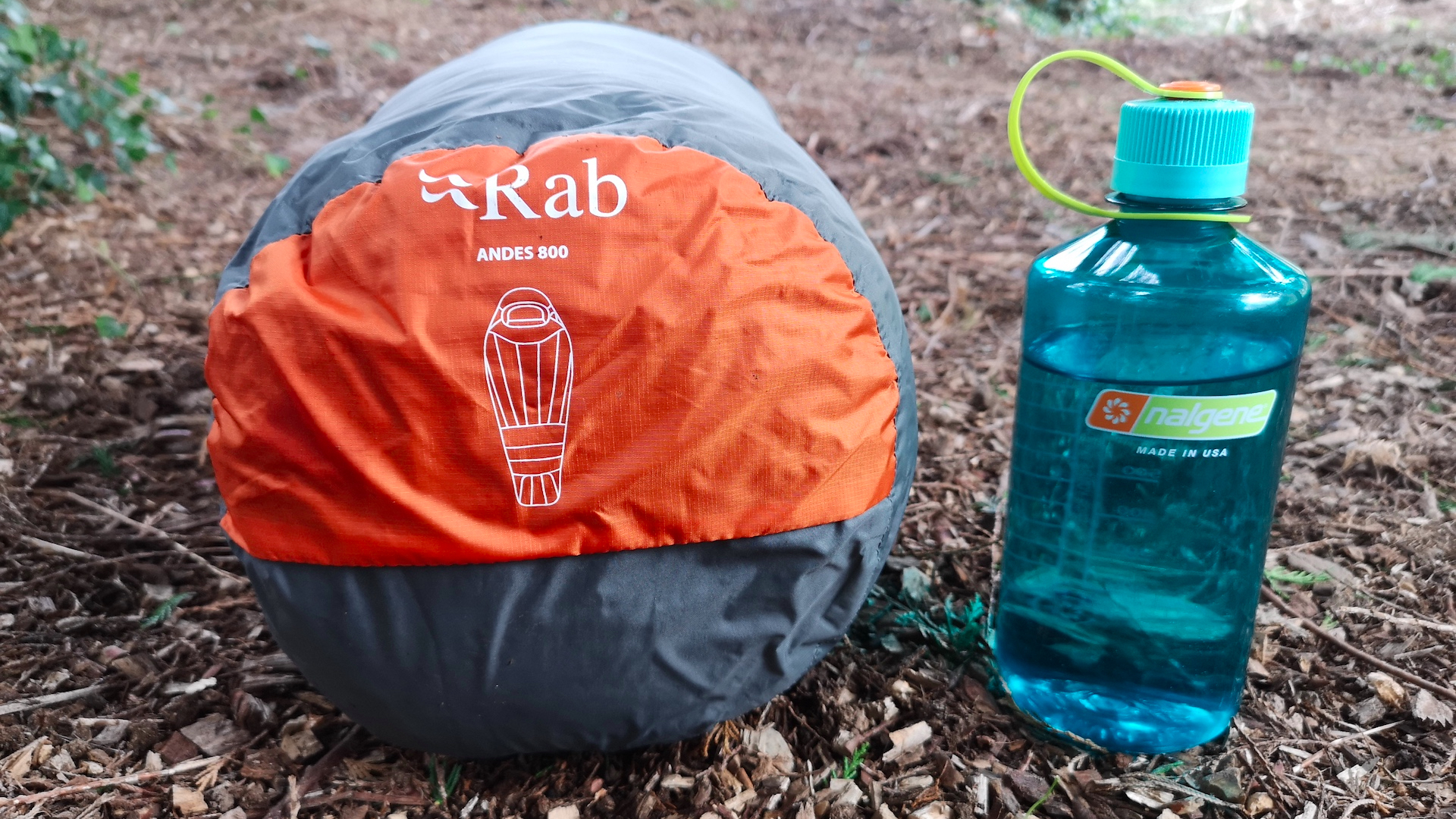
The Andes series features a more tapered cut than Rab’s equally warm Expedition series, which improves warmth for weight by reducing the internal volume of the bag. The drawback of this performance-focused design is that the inner dimensions may be a little smaller than most users are accustomed to, especially at the foot box. However, we didn’t find it restrictive or uncomfortable, thanks to some clever engineering that ensures the feet are cocooned in a comfortable position.
The hood feels similarly cozy, with drawcords that cinch in tight and are easy to operate from within. Both ends of the bag also use highly water-resistant Gore-Tex Infinium fabric inside and out to provide enhanced moisture resistance. Indeed, the whole build of the Andes 800 is much better equipped to deal with damp conditions than most down sleeping bags.
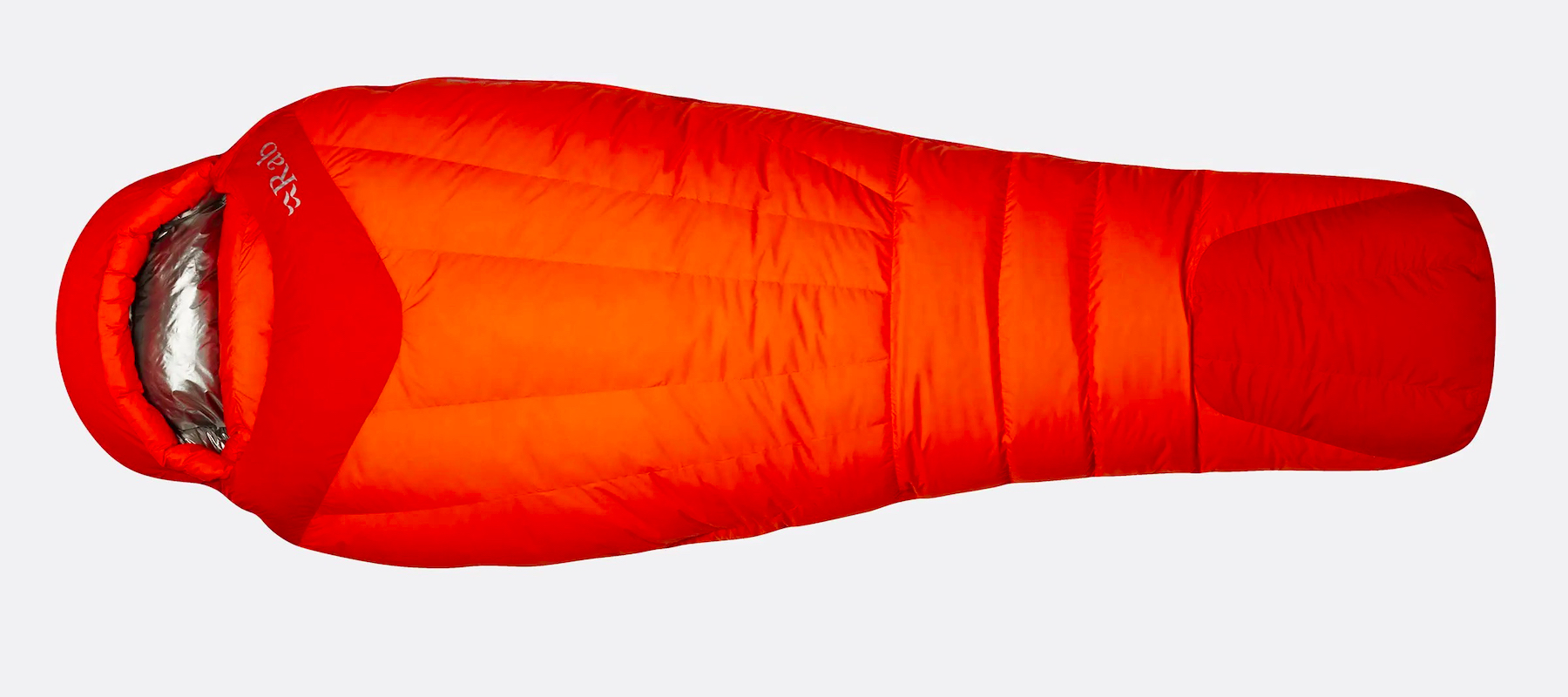
Of course, you could get similar wet-weather characteristics from a synthetic bag at a fraction of the cost, but it wouldn’t be anywhere near as light or as packable (see Down Vs Synthetic Insulation for more on this subject). Nor, in our experience, would it feel quite as luxurious or as downright cosy. In practical terms this equates quite simply to a better night’s sleep, even when temperatures drop into the minus double digits.
In short, if you need a bag this warm, we think the Rab Andes 800 Infinium offers excellent value for money. Our tester’s version is actually an older model from 2016 (when admittedly, the UK price point was £560), but it’s still going strong six years later, and we’re convinced it’ll still be with us in six years’ time.
The latest version has only got better, with the use of upgraded and even more weatherproof shell fabrics, plus that innovative reflective lining. Admittedly, the price has shot up by some £240 to £800 GBP in the UK – though it seems to be a better value purchase stateside, at $700 USD. So, although it’s a potentially pricey addition to your sleep system and one that needs to be carefully considered, in performance terms, we don’t think you’ll be disappointed.
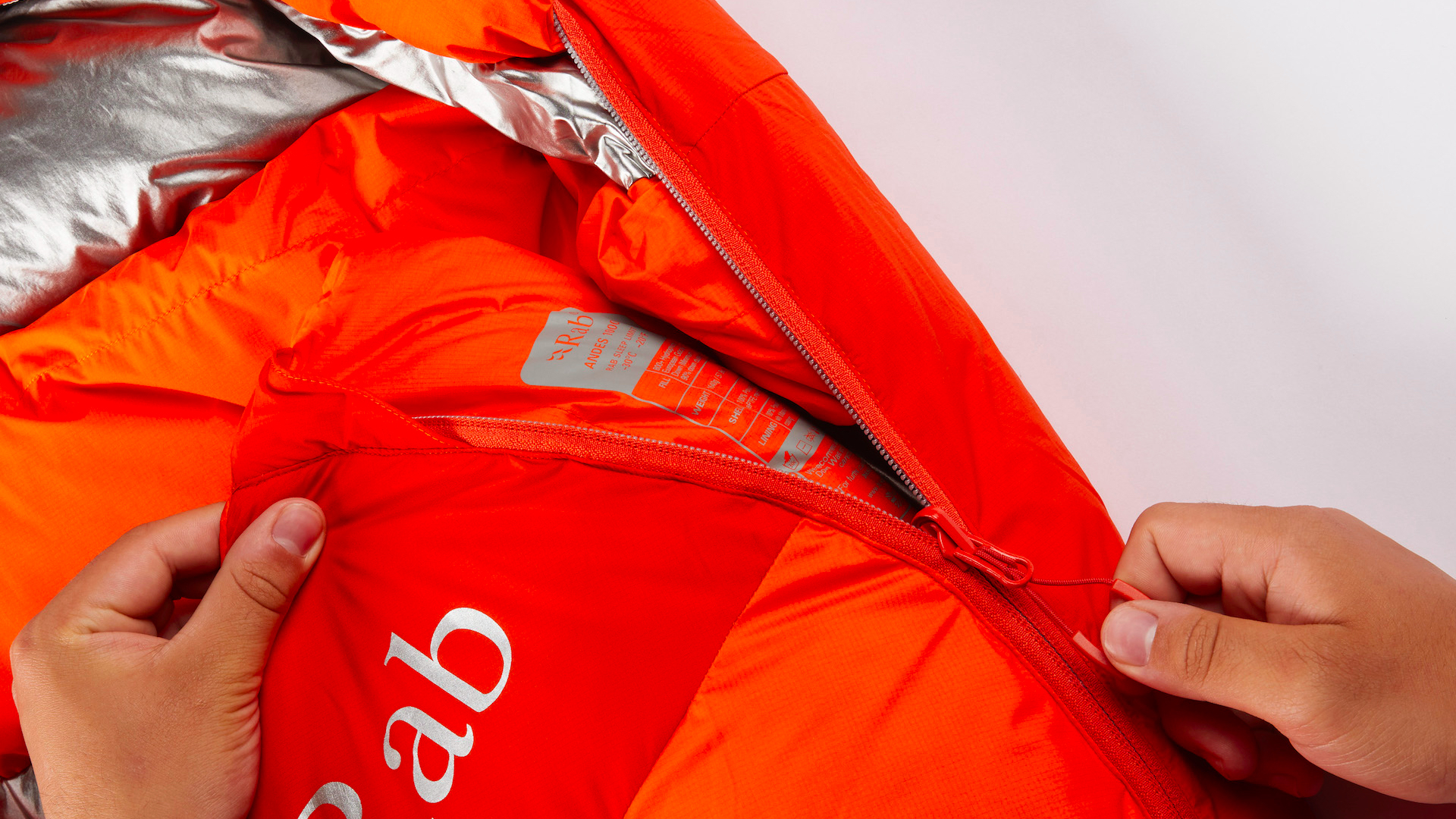
An outdoors writer and editor, Matt Jones has been testing kit in the field for nearly a decade. Having worked for both the Ramblers and the Scouts, he knows one or two things about walking and camping, and loves all things adventure, particularly long-distance backpacking, wild camping and climbing mountains – especially in Wales. He’s based in Snowdonia and last year thru-hiked the Cambrian Way, which runs for 298 miles from Cardiff to Conwy, with a total ascent of 73,700 feet – that’s nearly 2½ times the height of Everest. Follow Matt on Instagram and Twitter.
